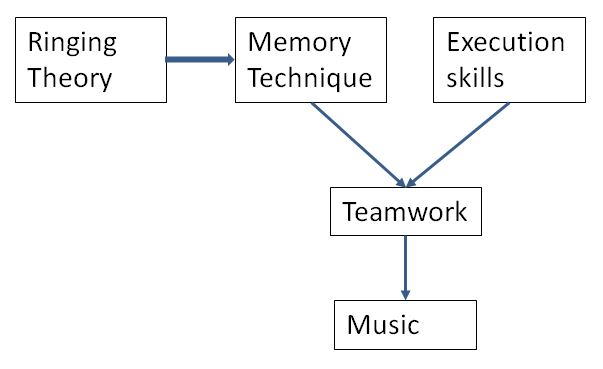Making Music
Question: Why ring changes rather than play conventional music?
The physical limits of towerbells which turn a full circle, and which can weigh many hundreds of kilograms (although bellringers still work in hundredweights, quarters and pounds)
preclude swift repetition of notes, therefore conventional music is impossible.
Once some control had been gained over the periodicity of a towerbell, ringing sequences and changing those sequences followed.
Handbell change ringers choose to work within the rules applying to towerbells.
Turning the abstract pattern into mathematical music has 4 key components:

Diagram: 01.01.02 The knowledge and skill categories of bellringing.
As a bellringer's skill increases, so the related theory becomes more complex, and the related techniques and skills become more extensive.
Documenting these aspects of handbell change-ringing is the primary purpose of this website.
Question: How do you learn?
The information on this site is presented as a logical progression.
Small steps, thorough understanding, and concerted practise in a team environment ensure progress in line with the natural talents of the learner.
|

